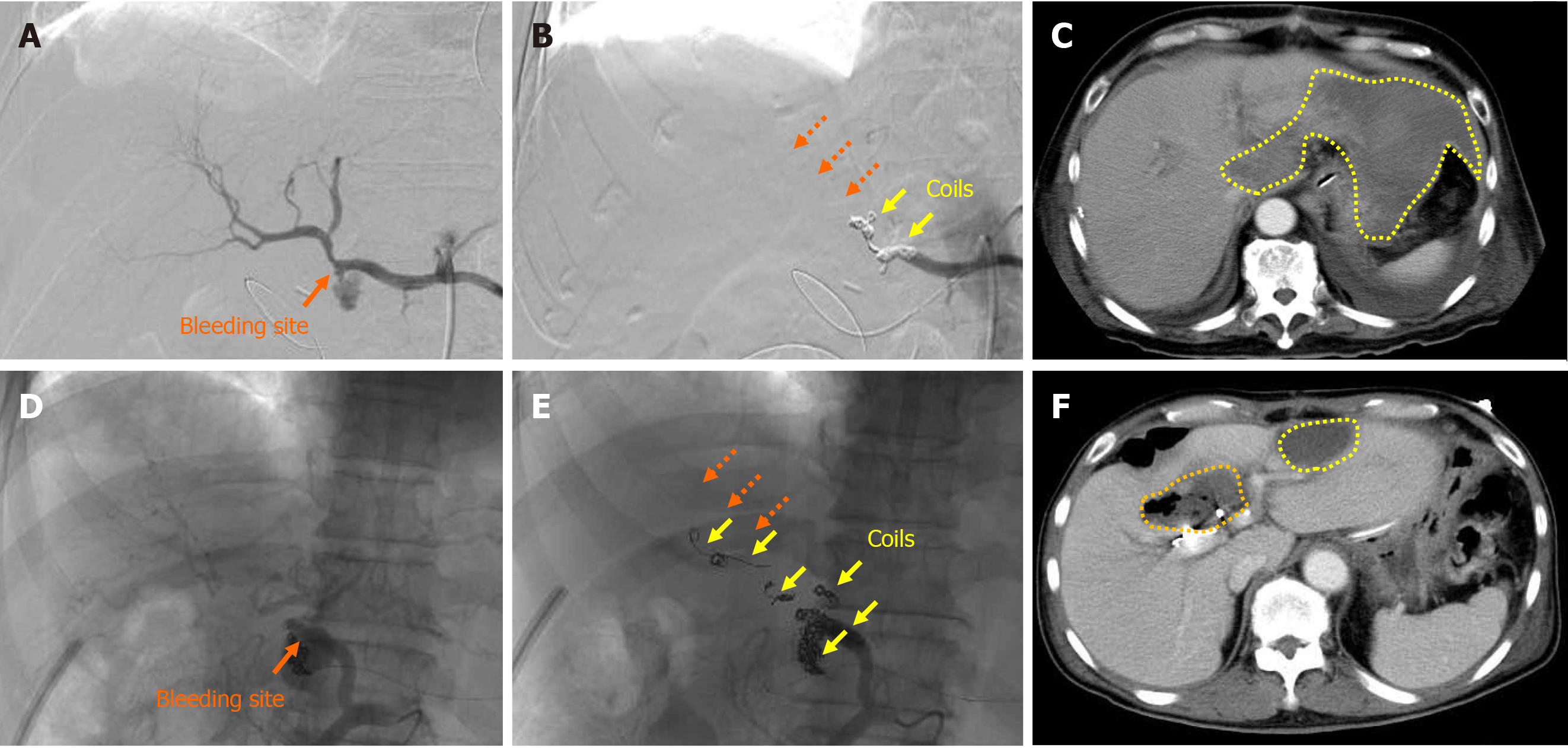Copyright
©The Author(s) 2021.
World J Hepatol. Apr 27, 2021; 13(4): 483-503
Published online Apr 27, 2021. doi: 10.4254/wjh.v13.i4.483
Published online Apr 27, 2021. doi: 10.4254/wjh.v13.i4.483
Figure 4 Liver infarction and abscess after transcatheter arterial embolization.
Actual findings in patient 13 and patient 14 are shown. A: Patient 13, the bleeding sites were detected; B: Patient 13, complete hemostasis was obtained by transcatheter arterial embolization, but the hepatopetal arterial flow was completely lost (dotted orange arrows); C: Patient 13, the patient subsequently developed liver infarction due to hepatic ischemia (dotted yellow circles); D: Patient 14, the bleeding sites were detected; E: Patient 14, complete hemostasis was obtained by TAE, but the hepatopetal arterial flow was completely lost (dotted orange arrows); F: Patient 14, the patient subsequently developed liver infarction due to hepatic ischemia (dotted yellow circles) and a liver abscess due to biliary ischemia (dotted orange circle).
- Citation: Kamada Y, Hori T, Yamamoto H, Harada H, Yamamoto M, Yamada M, Yazawa T, Sasaki B, Tani M, Sato A, Katsura H, Tani R, Aoyama R, Sasaki Y, Okada M, Zaima M. Fatal arterial hemorrhage after pancreaticoduodenectomy: How do we simultaneously accomplish complete hemostasis and hepatic arterial flow? World J Hepatol 2021; 13(4): 483-503
- URL: https://www.wjgnet.com/1948-5182/full/v13/i4/483.htm
- DOI: https://dx.doi.org/10.4254/wjh.v13.i4.483









